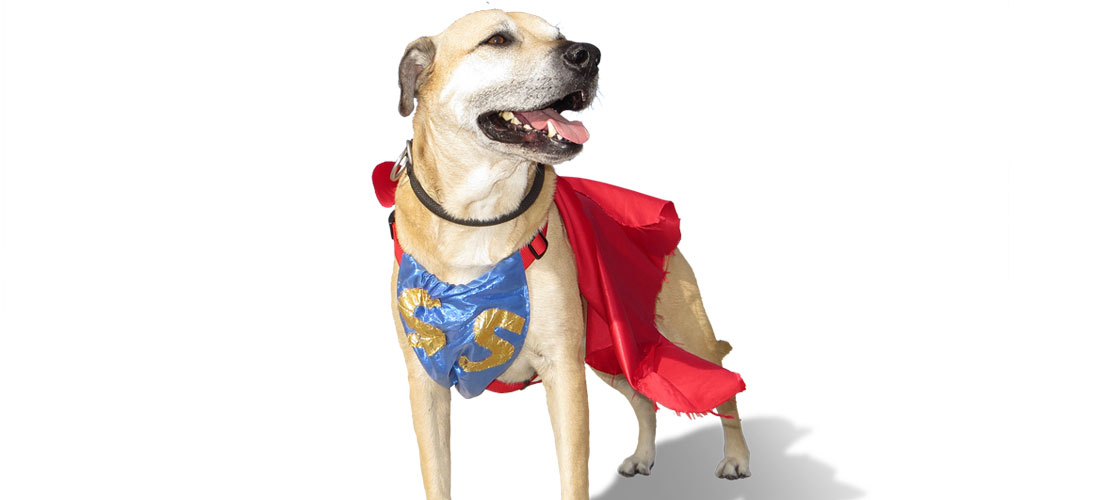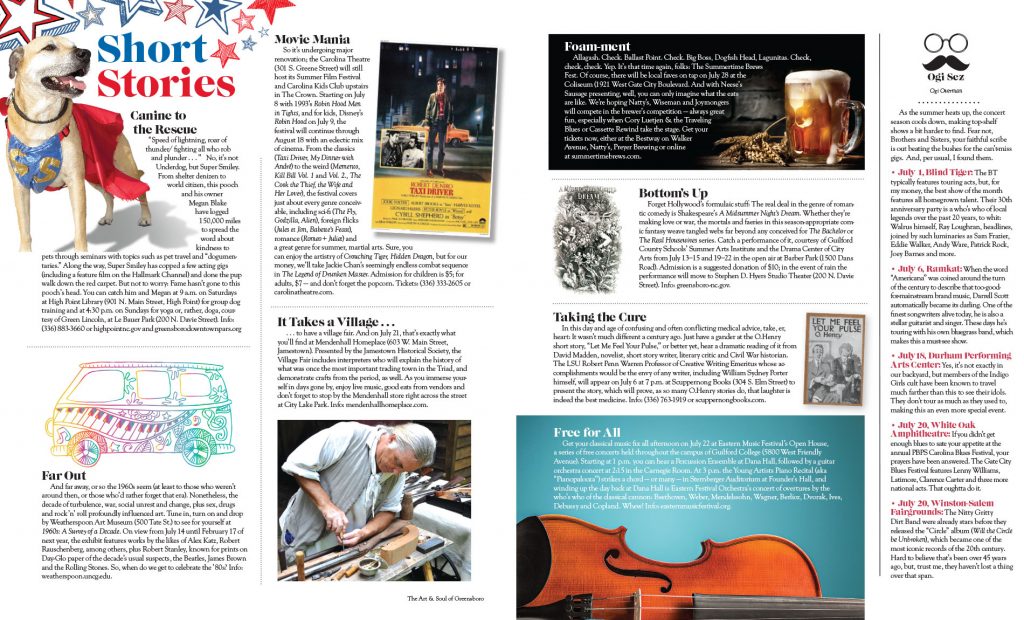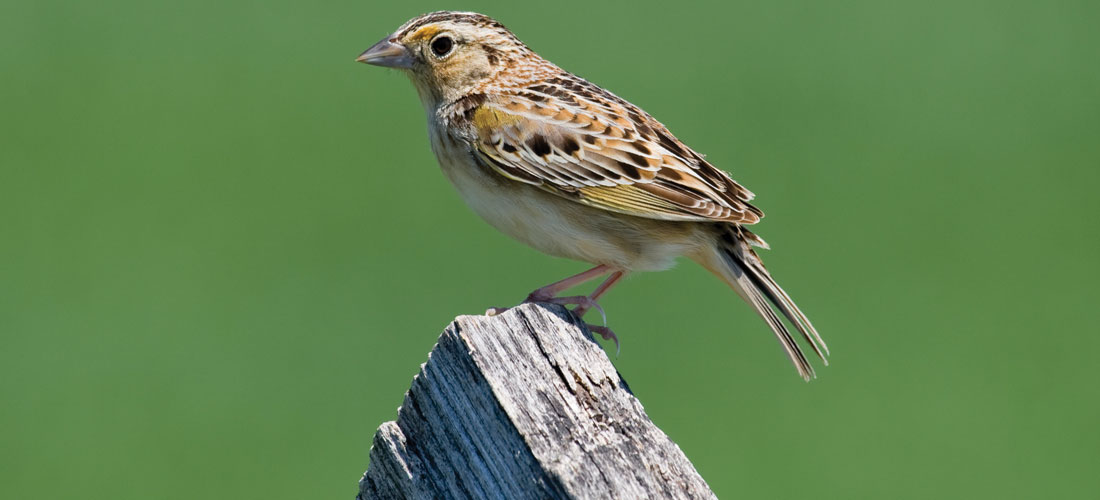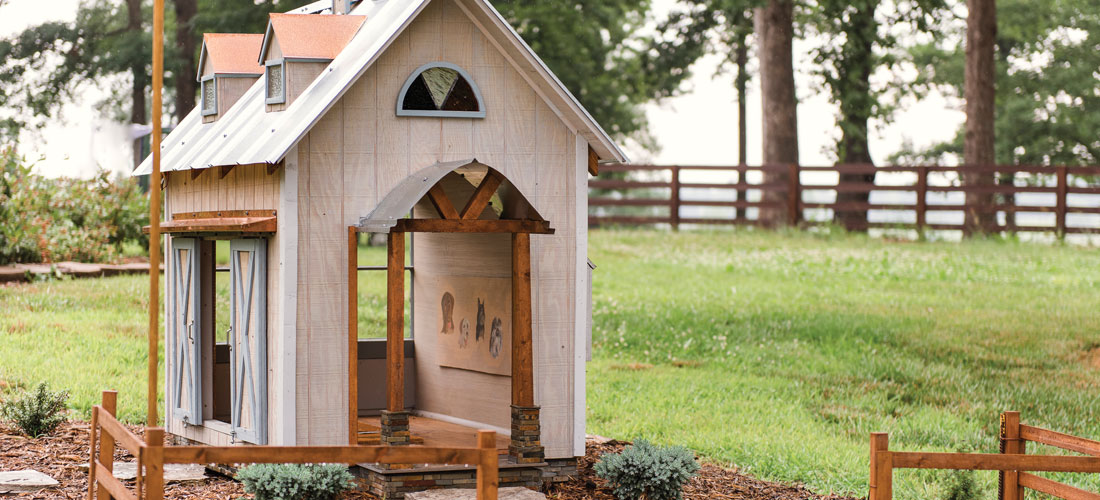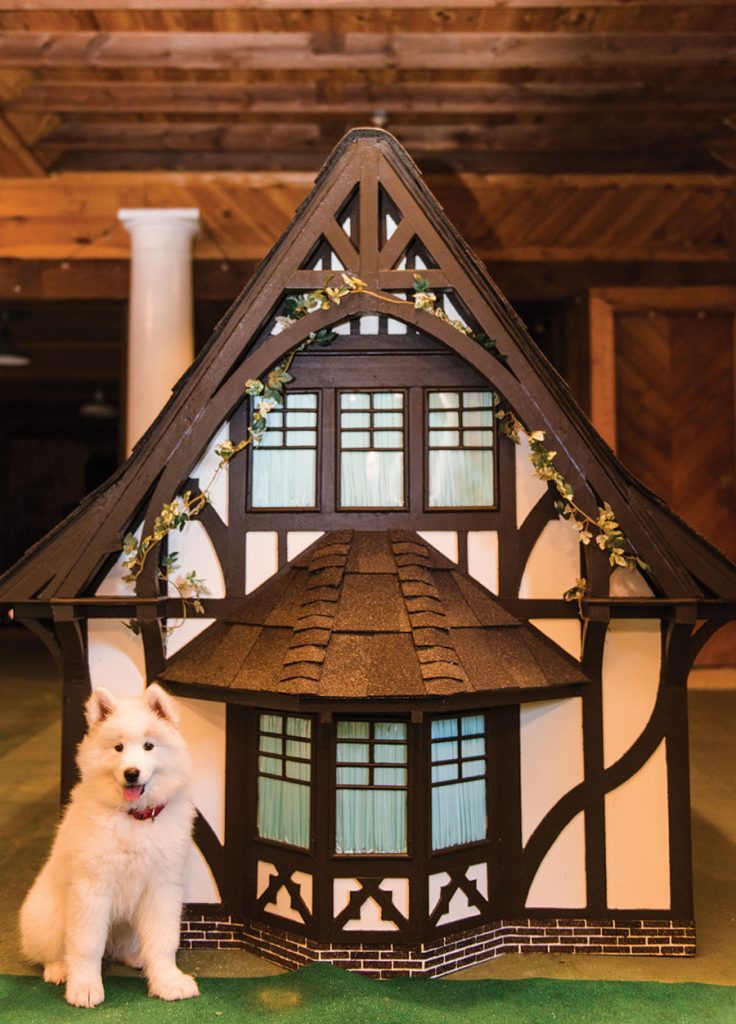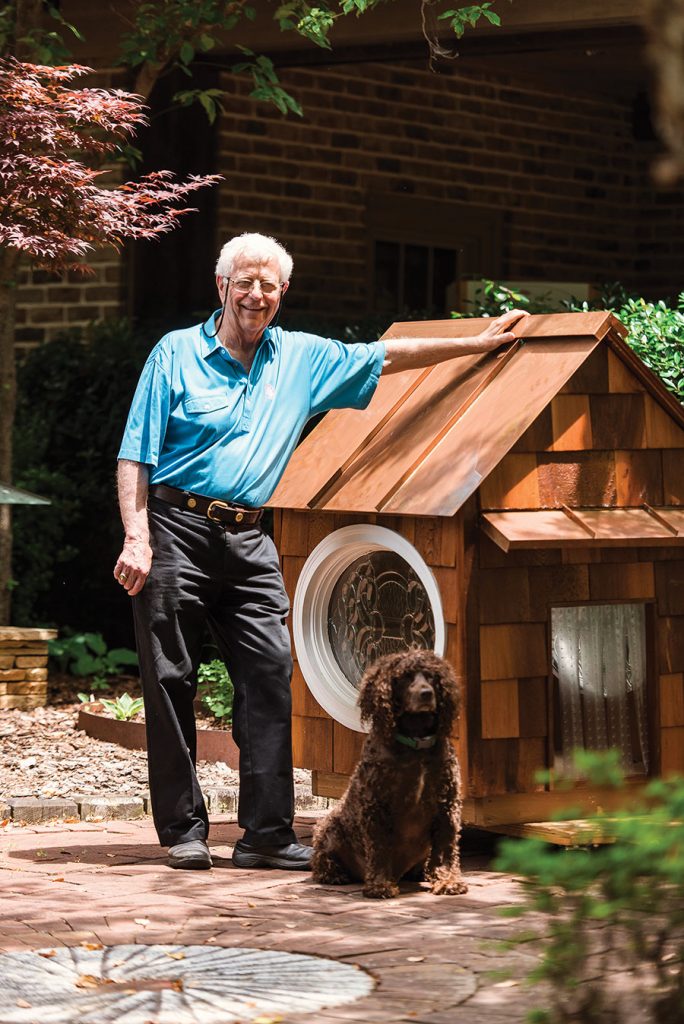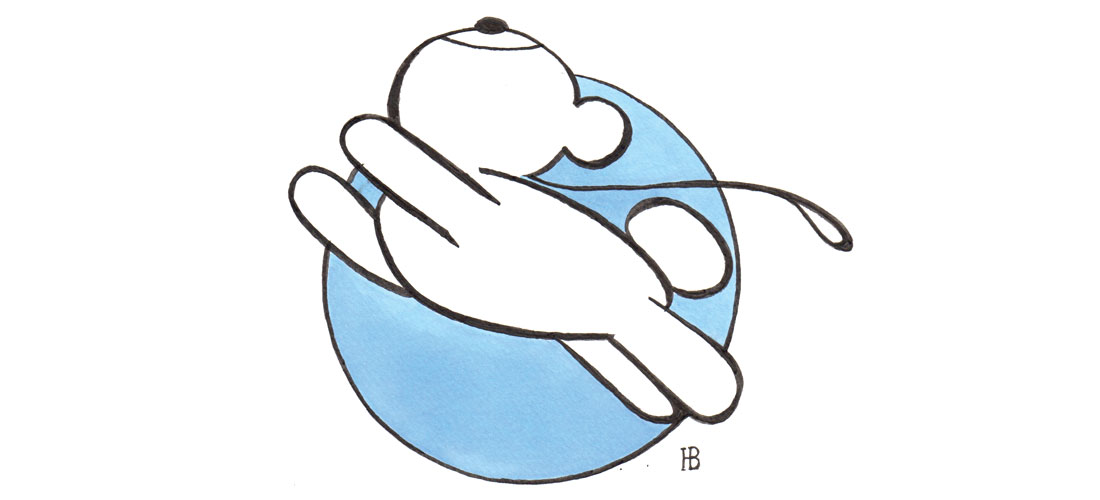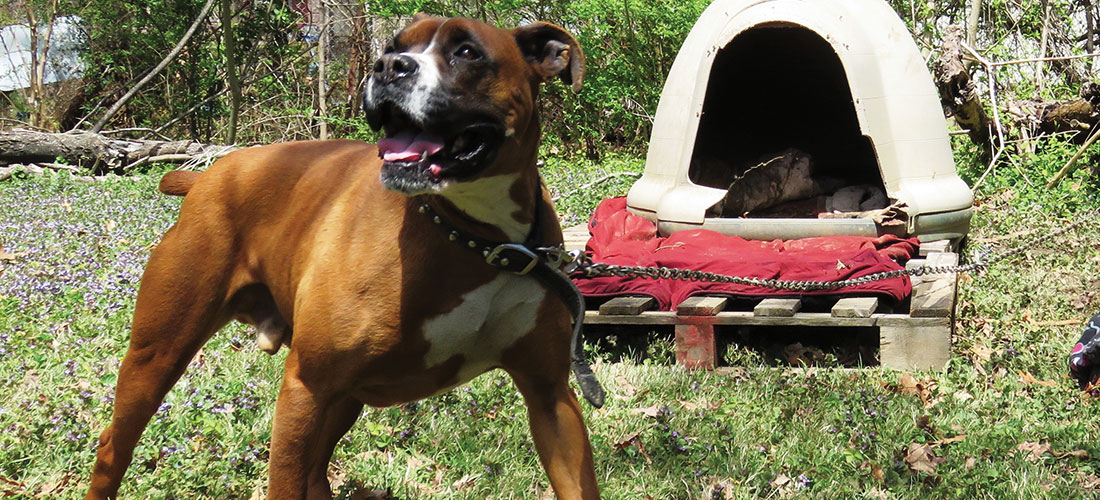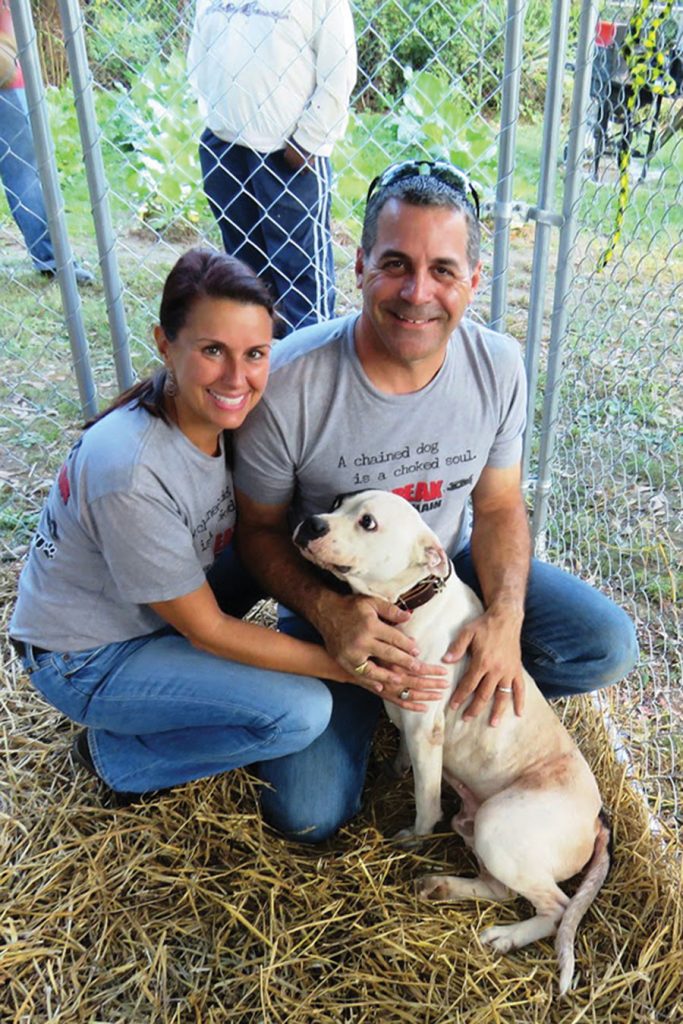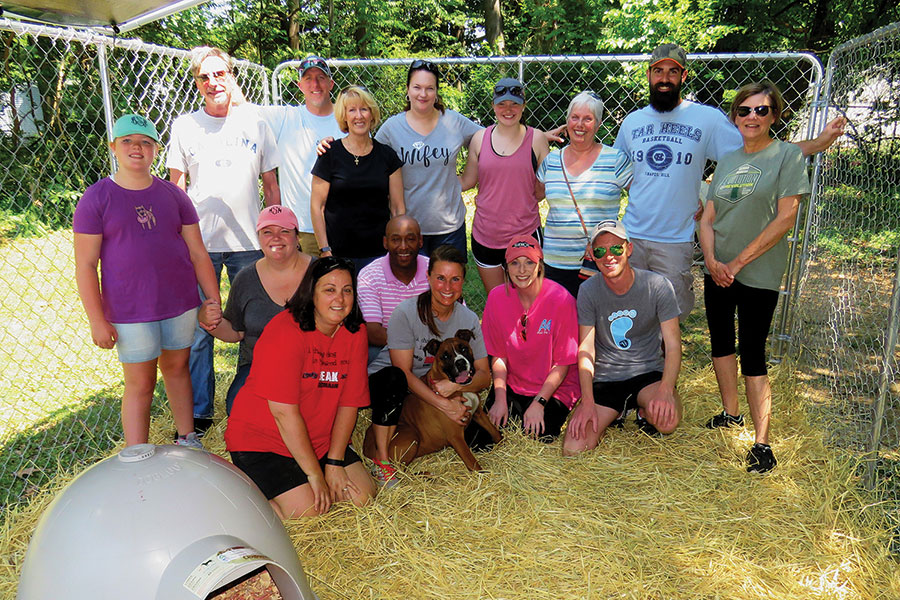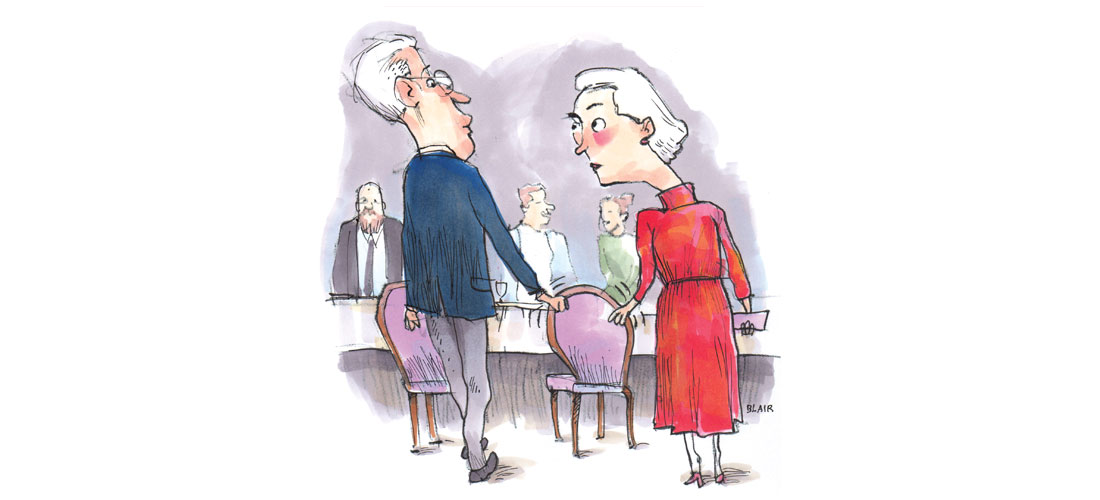Top Dog
Top Dog
World famous poodle handler Chris Manelopoulos, of Alamance County, dishes on how he gets blue-ribbon performances out of his show dogs
By Maria Johnson
In the world of big-time dog shows, handler Chris Manelopoulos is a stud.
He’s comparable to legendary horse trainer Bob Baffert, except Manelopoulos is trainer and jockey in one.
He tutors purebred canines from around the world at his Tarquin Kennels in Alamance County, then he trots his cold-nosed champions around the most storied rings in dogdom: the Westminster Kennel Club Dog Show, the AKC National Championship, the World Dog Show and dozens of smaller contests.
In recent years, he has handled an outstanding Afghan Hound and several Russell Terriers (commonly known as Jack Russells), but poodles are his specialty.
His most decorated student, a white standard poodle named Remy, won 63 Best-in-Show titles during her short career in 2007–08.
Twice, she pranced away from Westminster with a blue ribbon in the nonsporting group.
Twice, she clenched the national title from the Poodle Club of America.
Her victories boosted Manelopoulos’s profile, which has grown stronger since. To date, his charges have sunk their teeth into four national poodle club titles, tying him with two other handlers.
At age 46, he’s likely to smash the record and become the top poodle guru ever.
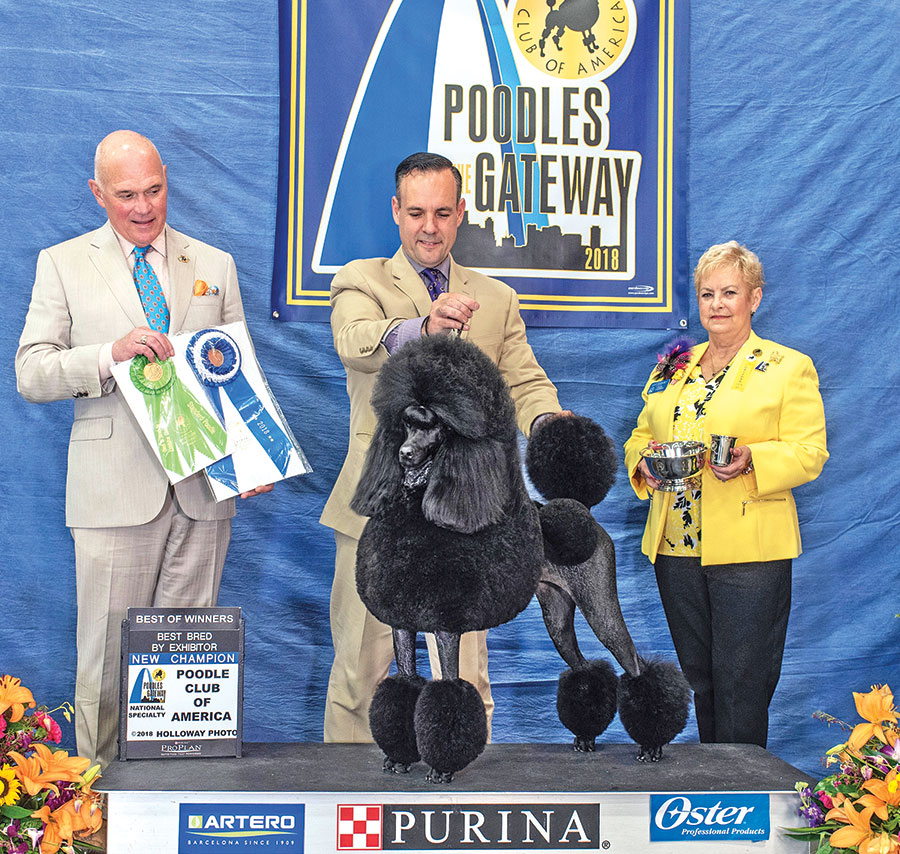
“In handler years, I’m coming into my prime,” says Manelopoulos, a native Aussie with a hearty laugh. “Many of the top handlers are between 45 and 60. It’s a little bit like horse training where experience and reputation mean a lot, especially to the more premier or elite clients. It takes time to get to that point.”
Manelopoulos and his wife Rachel Corbin, also a trainer and handler, moved from the West Coast to the Raleigh area in 2000. For eight years, they lived in Greensboro, where they rented part of the Nanhall kennel, before settling in rural Haw River.
Recently, we sat down for a tongue wagging on Manelopoulos’s porch; in the background, big-haired show poodles frolicked and yapped in their runs; beside the home’s front door stood two fabric-over-wire poodles. They were made as Christmas decorations, but here, they stay up all year.
How did you become a poodle handler?
I grew up in Melbourne, Australia, and my parents had toy poodles. They showed them a little, and I lived across the street from a park where there was a big obedience school. I used to go watch the dogs, which led to me going to obedience trials, which led to going to dog shows. As a teenager, I started showing dogs for a very famous all-breeds judge in Australia. She asked me if I would be interested in coming over to America for six months to learn about dog shows. That was 27 years ago.
Did you have a breakthrough show or dog?
I had a miniature named Nina. She won a (Poodle Club of America) national, and that got people to notice me. That was in 2000. Then, in 2003, I got a bitch from Australia . . .
Wait, do you correct you yourself a lot when you are talking about bitches to non-dog show people?
Yes, because in magazines, they don’t like you to say “bitch.” But in 2003, I got a bitch, a black standard poodle from Australia named Tasha, and she was the top nonsporting dog, so that was my second national. She won Westminster and all those top awards. Remy was the next one. She’s still, to this day, my top-winning dog.
What makes a dog special?
There are a lot of things. Being really good in structural quality, the physical part, is the first part. Each breed has a breed standard that the judges go by. There are several good dogs out there, but what makes a dog a really top one is having that “it” factor, just as in acting or modeling, that kind of thing. It’s like I say to people all of the time: You can see two women walking down the street and one may not be quite as physically attractive as another one, but they way they carry themselves, their attitude, can definitely make a difference. Some dogs just have it.
Do they know it?
Yes. The top show dogs love the attention. They love going to dog shows, they love the performance part of it. They love the clapping of the crowds and they react to that. Many of the top show dogs — if we go to a small show, they don’t show as well because there aren’t as many people, and the dogs really seem to pick up on it.
Can I put you on the spot and ask if you’re the same way?
Yeah, I am. When I go to a small 500-dog show in Lumberton, N.C., it’s a little hard to get as excited as I would walking on the floor of Madison Square Garden in New York, but as a professional you have to put forward the same amount of effort.
Tell me about the role of handler.
A lot of people don’t understand the role of handler. Yes, it’s to guide the dog around the ring and have it show, but there’s a lot more to it than that. You have to be very aware of your surroundings and your situation and things that might distract your dog. You have to be in tune with your dog to get the best performance out of her. When they’re happy, they show better. They look better.
So it’s not just about a constant stream of treats, which I’ve noticed the handlers keep giving.
Yes, because sometimes that’s distracting to constantly be feeding them. It’s about encouraging them to be confident in themselves. Some days, they have a bad day. Some days, they don’t feel like it. Some days, they’re tired or they slept wrong, and they’re sore or whatever. They don’t always show the same every day. It’s picking up on those things. There’s a lot of mental work that goes on with the dogs.
How would you buck up a poodle that was not having a good day?
A lot of it is the way you talk with them, your mannerisms. You have to be calm and purposeful and deliberate in what you do and encourage the dogs to be the same. Being frantic and panicking doesn’t really work. The dogs need consistency, steadiness and encouragement.
And they can tell?
Yes, dogs react more to the tone than the actual words. The words are not that important. People are the same way. You can have very serious conversations with people, but if you have it in the right way, people react much better than they do of you are yelling and screaming. Dogs are exactly the same.
How might you talk to a dog?
I talk to them almost constantly when we’re in the ring, primarily to encourage them and to keep them focused on me. I’m quiet and subtle, but I talk a lot in the ring.
Give me a clip of what you might say in the ring?
Oh, if they’re excited I’ll say, “Just be easy. Don’t go too fast.” If they’re a little slow, I’ll say, “C’mon, let’s go! Let’s go!” These are not things you’re going to hear. I’m only a foot or two away from the dogs, so I don’t have to be loud. A lot of the time, I tell them to watch the judge.
And they’ll do that?
Yeah, I’ll practice with them in the ring, and I’ll have someone pretend to be the judge and feed them. So often they think the judge might give them a little treat so they focus. There’s a lot of training to do things like that
Is it true that poodles are the most intelligent dogs?
Oh, I think they absolutely are. They’re extremely easy to train. They’re very social. They require more mental stimulation than physical stimulation. The number one thing a poodle wants to do is make you happy. That’s not true with all dogs.
Let me ask you about the classic poodle haircut, the pom-pom bracelets and the big hair and ears, and the puffy tail and jacket. Where did that come from?
Originally poodles were hunting dogs so people would take them in small boats or around water to retrieve ducks. People think it’s a French breed, but it’s not. It’s a German breed. They have a water repellant coat and they don’t shed, so they constantly grow hair all over their bodies. The hunters found they could shave the dogs so water could drain away, and they’d dry quickly. They left the jacket because in Germany the water was cold, and they wanted hair around the heart and lungs to keep the internal organs warm. They would shave the legs from the elbow to about the pastern, or the knee, and that was so the water would drain away from the chest quickly.
What about the pom-poms?
They left the pom-poms on the front legs so when they ran through brush, it wouldn’t cut their knees. They would shave the feet so they would not pick up mud and dirt. They left the pom-poms on the hips to protect the hips and kidneys in the cold water. They shaved the back legs so the water would drain away quickly, but they left the hair to protect the hock joints in the brush. They say the only reason they left the hair on the tail is so when they were swimming in the water, or running in the brush, they could see the tip of the tail. Obviously that trim has become very stylized, but the basis for it is a tradition hunters did 200 years ago. So when then they started showing poodles, they wrote the breed standard to say they had to be shown in this hunting trim. It’s called the Continental trim today.
Are poodles still used as hunting dogs?
Yes, many people hunt with their poodles. I think on Duck Dynasty they hunt with a poodle.
But they don’t trim them like that. In fact, I will give you $1,000 if you can convince one of the Duck Dynasty guys to hunt with a poodle in a Continental trim.
Honestly, I’ve never watched Duck Dynasty.
Did you see the movie Best in Show?
Yes! They used three standard poodles as stand-ins for the one standard poodle. One of them was one of my poodles. When I was in Seattle, they filmed the movie in Vancouver. For two weeks they needed poodles for the shoot. One of them was one of mine, named Gina.
Did you think the movie was funny?
Oh yeah, I love that movie. Some dog-show people hate it because they’re like, “Oh, it characterizes the dog-show world.” And I’m like, “But it’s a fairly accurate portrayal.” It’s a little extreme, but there’s a lot of truth in it.
What’s you’re next big show?
We’re going to the World Dog Show in Amsterdam in August. I’ll have two dogs there, Brie and Venus. Brie will go to the AKC show in December. I don’t know about Westminster. If we don’t take Brie to Westminster (in February), we’ll take Venus. The world show is different in that the biggest American show is five and a half thousand dogs. The World Dog Show attracts over 20,000 dogs.
That’s a lot of bitches, Chris.
Exactly! OH



